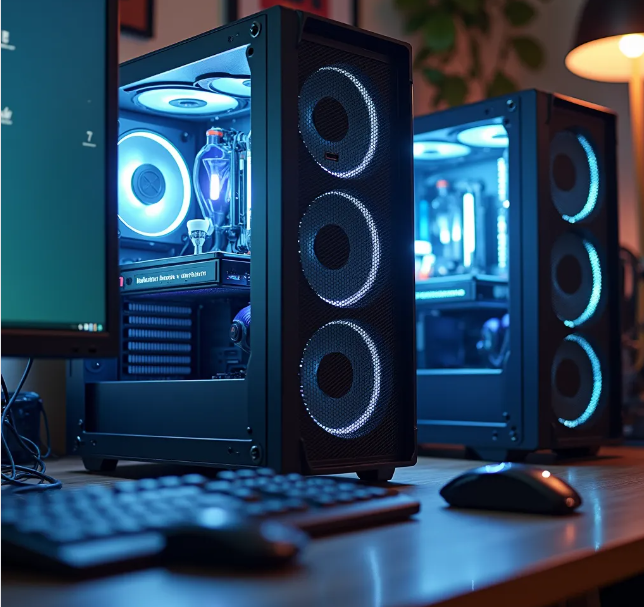Understanding Bottleneck Rechner and FPS Rechner: A Complete Guide

Introduction
In the world of PC gaming and custom computer building, two essential tools have gained immense popularity among enthusiasts — the Bottleneck Rechner and the FPS Rechner. These tools help gamers and PC builders optimize their system performance, choose the right components, and ensure they get the most out of their gaming experience. This article will explore what these tools are, how they work, their benefits, and how to use them effectively to build a well-balanced and high-performance gaming PC.
1. What is a Bottleneck Rechner?
The term “Bottleneck Rechner” is derived from German, where “Rechner” means “calculator”. So, a Bottleneck Rechner is essentially a bottleneck calculator. It is a tool that helps users determine whether one component of their PC — typically the CPU or GPU — is limiting the overall performance of the system.
When building or upgrading a PC, the goal is to have balanced performance between all major components. If one part is significantly weaker than the others, it creates a bottleneck, meaning that the stronger component cannot reach its full potential because it is waiting for the weaker component to catch up. This often happens between the graphics card (GPU) and the processor (CPU).
For example, if you pair a high-end graphics card like the RTX 4090 with a mid-range CPU, the CPU may not be able to keep up with the GPU’s processing demands. As a result, the GPU’s performance is limited, and you won’t achieve the high frame rates the GPU is capable of. This is where a bottleneck calculator comes in handy.
2. How Does a Bottleneck Rechner Work?
A Bottleneck Rechner analyzes the specifications of your CPU and GPU to estimate how well they will work together. Most online bottleneck calculators follow these steps:
-
Component Input:
The user selects or enters the exact model of their CPU and GPU. -
Performance Database Comparison:
The calculator compares the two components using a large database of benchmark results and performance statistics. -
Bottleneck Percentage Calculation:
It then calculates a bottleneck percentage, which indicates how much one component is limiting the other.
-
0%–10%: Well-balanced system.
-
10%–20%: Slight bottleneck but usually acceptable.
-
20%+: Noticeable bottleneck that may affect performance.
Suggestions:
Some advanced calculators provide recommendations for better-matching components or overclocking tips to reduce bottlenecking.
While these calculations are estimates and not 100% exact, they give a solid overview of how balanced your build is and whether an upgrade might be necessary.
3. Common Causes of Bottlenecking
Bottlenecks can occur for several reasons. Here are the most frequent ones:
-
CPU Bottleneck:
This happens when the processor is too weak to keep up with the GPU. It is most noticeable in games that rely heavily on CPU performance, such as open-world or simulation games. -
GPU Bottleneck:
This occurs when the graphics card cannot keep up with the CPU. This is common when using integrated or entry-level GPUs with powerful processors. -
RAM Limitations:
Insufficient or slow RAM can cause performance drops, even if the CPU and GPU are well-matched. -
Background Processes:
Running too many programs in the background can also create artificial bottlenecks.
Identifying the cause of the bottleneck is crucial because it helps you decide which component to upgrade first.
4. What is an FPS Rechner?
The FPS Rechner, which translates to FPS Calculator, is another valuable tool for gamers. FPS stands for “frames per second”, and it indicates how smoothly a game runs on a particular system. A higher FPS means smoother gameplay, while lower FPS can result in lag, stuttering, and an overall poor gaming experience.
An FPS Rechner estimates how many frames per second your system will achieve in specific games based on your hardware configuration. This tool is especially useful before purchasing a game or upgrading components, as it gives you a realistic expectation of performance.
5. How Does an FPS Rechner Work?
Similar to a bottleneck calculator, an FPS Rechner uses performance databases and benchmarks to predict frame rates. Here’s how it typically works:
-
Hardware Input:
You enter your CPU, GPU, and RAM specifications. -
Game Selection:
You choose the game you want to analyze, along with the resolution (e.g., 1080p, 1440p, 4K) and graphic settings (low, medium, high, ultra). -
Performance Estimation:
The tool compares your hardware to real-world benchmarks and predicts an average FPS you can expect in the selected game. -
Optimization Tips:
Some calculators provide tips, like lowering shadows or resolution, to achieve better FPS on your system.
This allows gamers to know in advance whether their system can handle demanding titles or whether upgrades are required.
6. Why Bottleneck and FPS Calculators Matter
These tools play a crucial role in PC building and gaming performance optimization. Here’s why they matter:
-
Better Component Matching:
By using a Bottleneck Rechner, you can avoid mismatched hardware combinations that lead to wasted potential. -
Cost Efficiency:
Instead of overspending on a top-tier GPU while keeping an old CPU, you can find the best balanced combination for your budget. -
Performance Expectations:
FPS calculators help you set realistic expectations before buying a game or upgrading parts. -
Upgrade Planning:
These tools help prioritize upgrades. For example, if the bottleneck calculator shows a 30% CPU bottleneck, you know the CPU should be upgraded first. -
Future-Proofing:
Balanced builds tend to last longer, reducing the need for frequent upgrades.
7. Tips for Using Bottleneck and FPS Calculators Effectively
While these calculators are extremely useful, it’s important to use them wisely. Here are some expert tips:
-
Cross-check results with real benchmarks.
Always compare the calculator’s output with actual gaming benchmarks on trusted platforms like YouTube or tech review websites. -
Consider your usage.
Not all games are CPU- or GPU-heavy. For example, competitive shooters often rely more on CPU, while graphically intense RPGs depend on the GPU. -
Don’t obsess over small bottlenecks.
A 10–15% bottleneck is normal and often has little impact on real-world performance. -
Account for background tasks.
If you stream, multitask, or run heavy software alongside gaming, choose components accordingly. -
Update regularly.
Hardware databases change frequently. Use up-to-date calculators to get accurate estimates.
8. Popular Bottleneck and FPS Calculators
There are many reliable calculators available online. Some popular examples include:
-
PC-Building Websites: Many custom PC builder platforms have built-in bottleneck and FPS calculators.
-
Bottleneck Calculator Tools: Websites like PC-Build Bottleneck Calculator provide detailed percentage breakdowns.
-
FPS Benchmark Tools: Many FPS calculators let you choose hundreds of popular games and resolutions for precise estimates.
Always ensure you use reputable sources to avoid misleading data.
Conclusion
In the competitive world of PC gaming and custom builds, understanding the Bottleneck Rechner and FPS Rechner can make a huge difference. These tools empower you to make smart decisions, match components effectively, and achieve the best gaming performance for your investment. While they may not provide 100% exact numbers, they offer valuable guidance that can save you money, time, and frustration.
For more information.

- Music
- Travel
- Technology
- AI
- Business
- Wellness
- Theater
- Sports
- Shopping
- Religion
- Party
- Other
- Networking
- Art
- Literature
- Home
- Health
- Gardening
- Games
- Food
- Fitness
- Film
- Drinks
- Dance
- Crafts
- Causes
